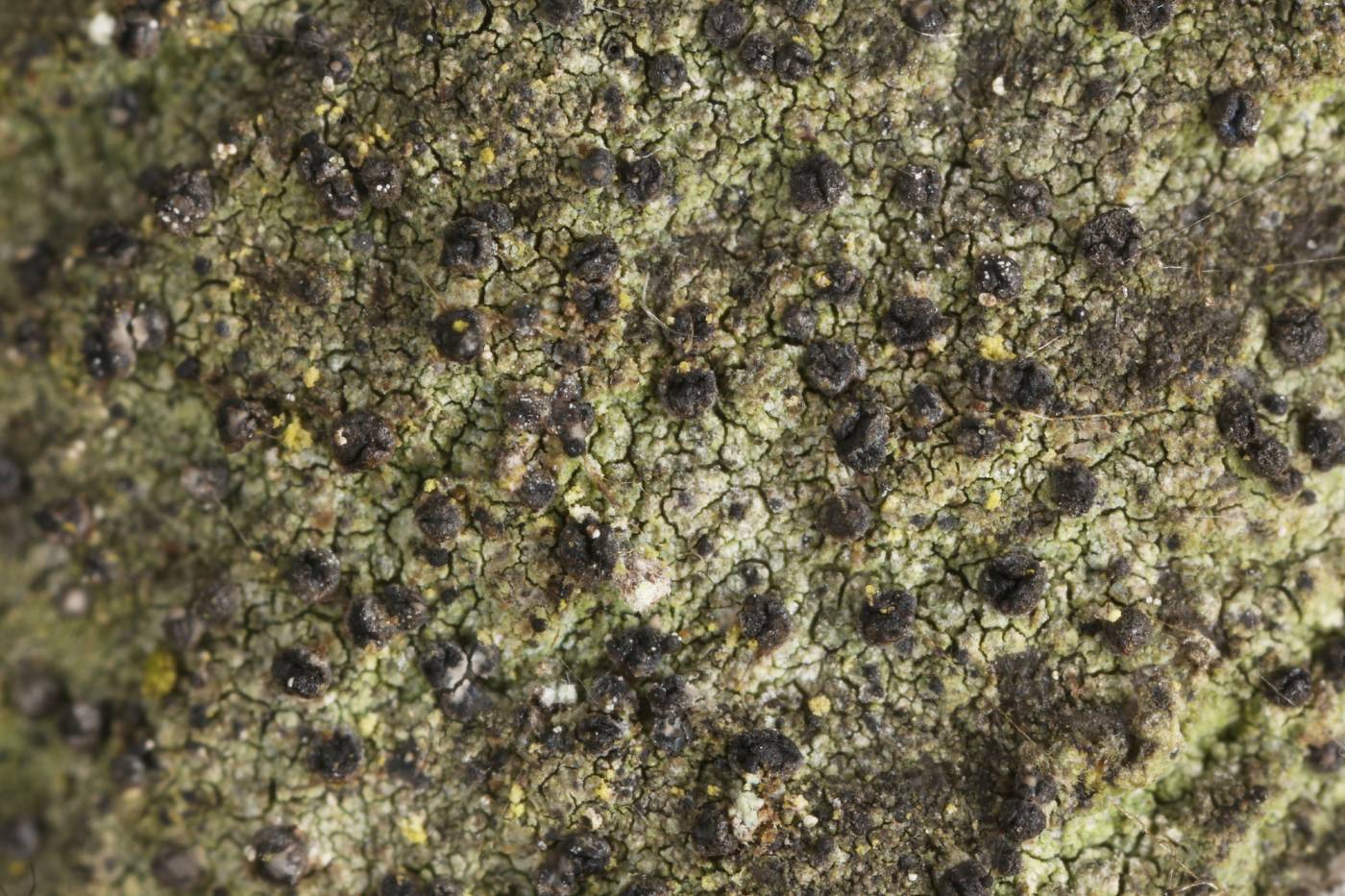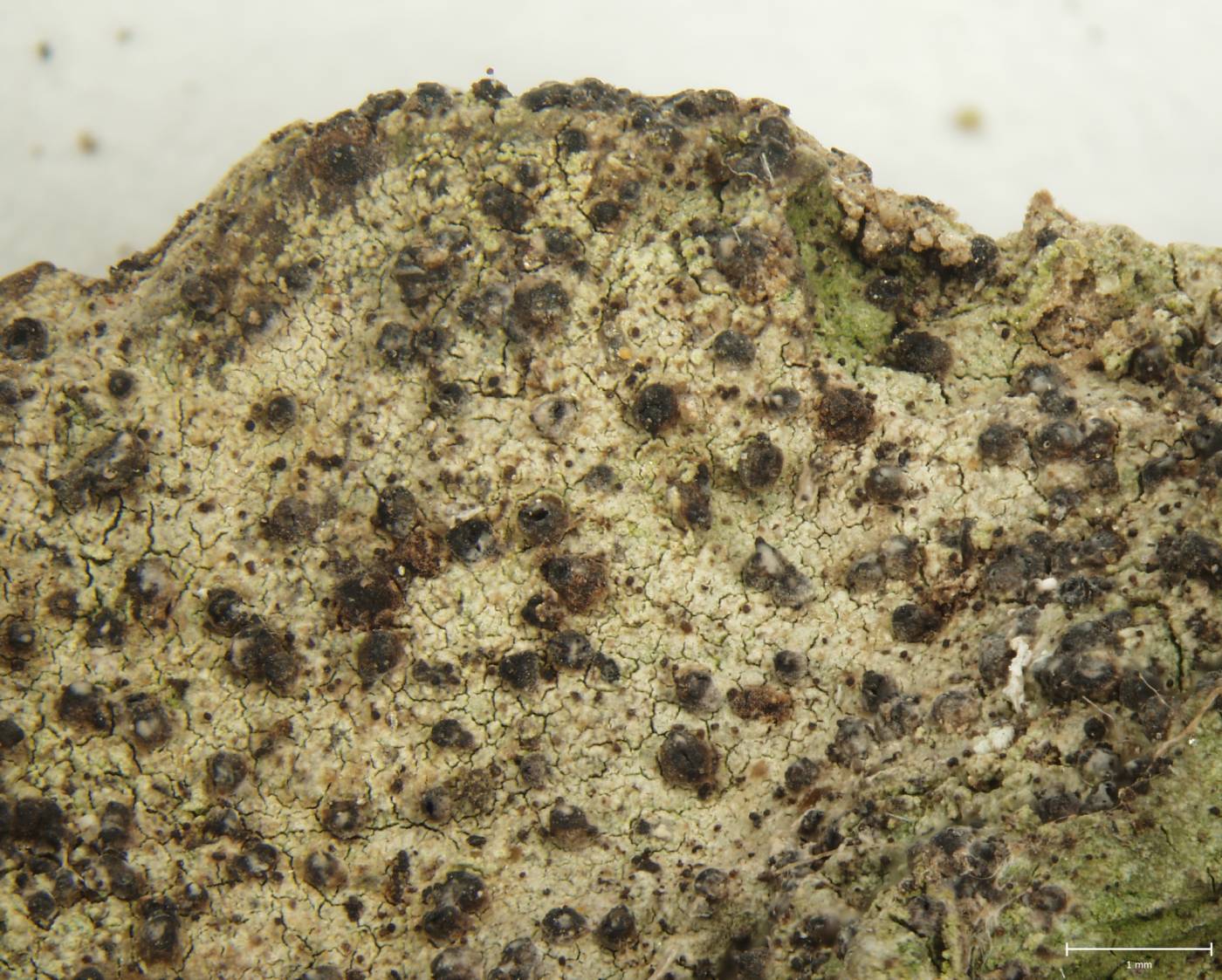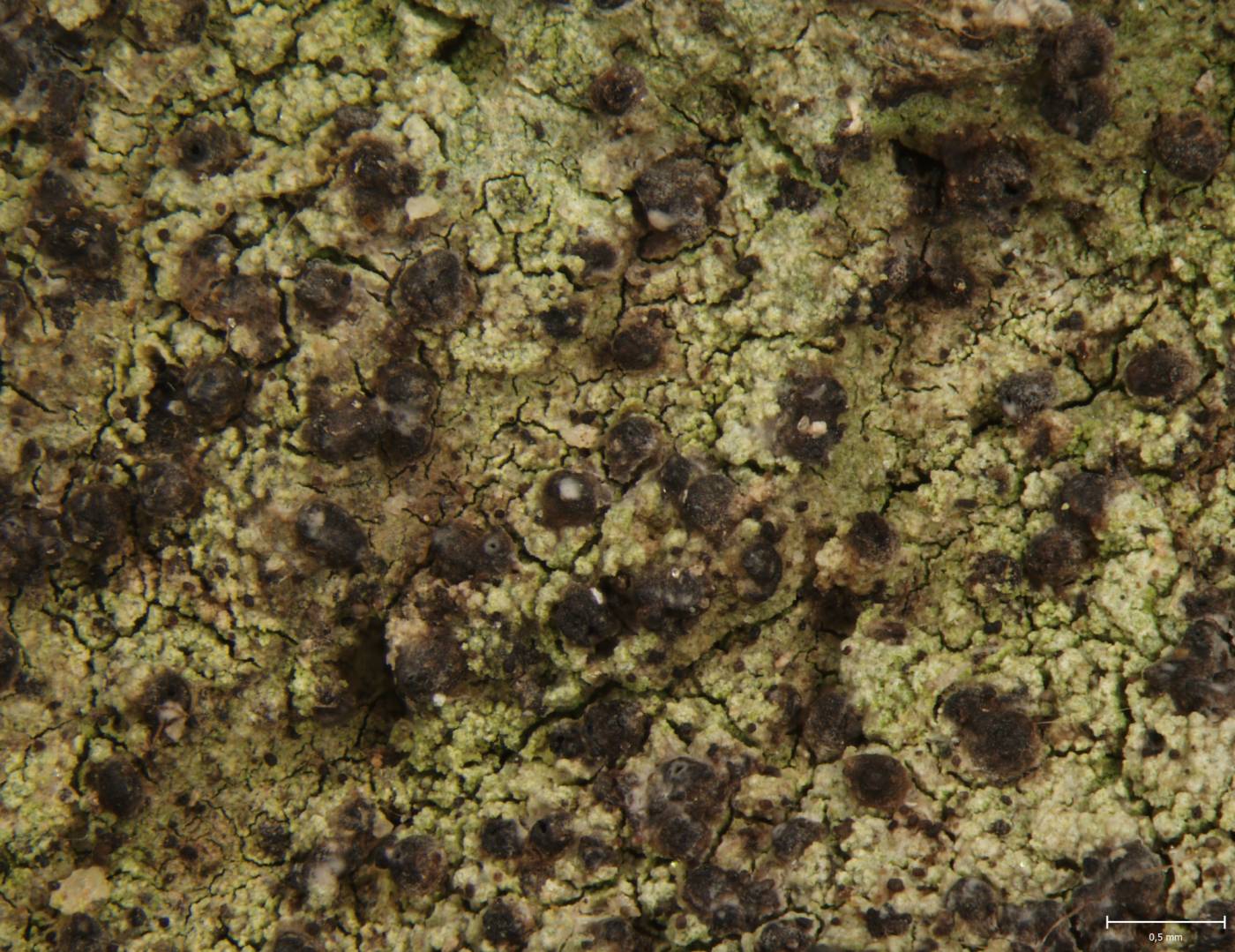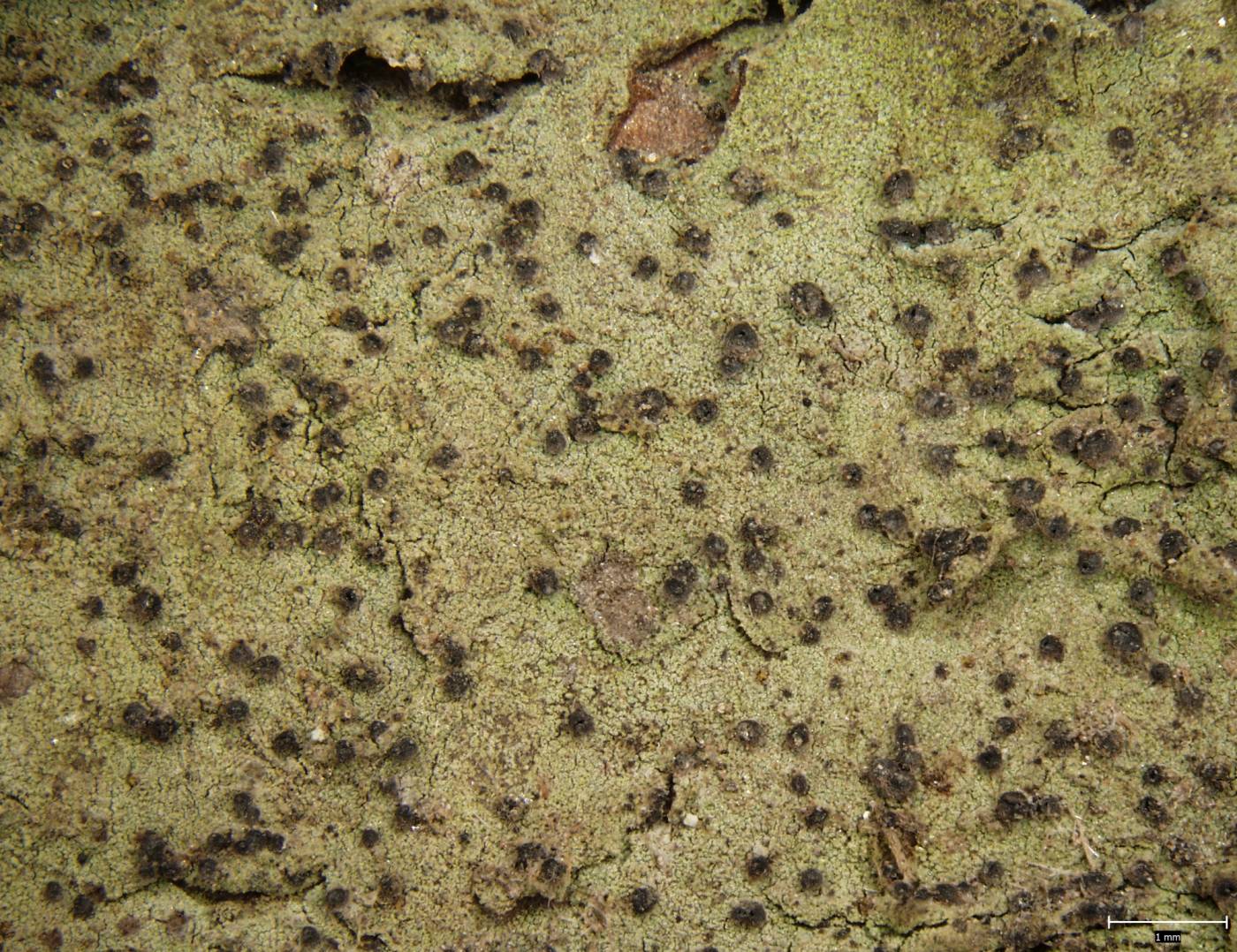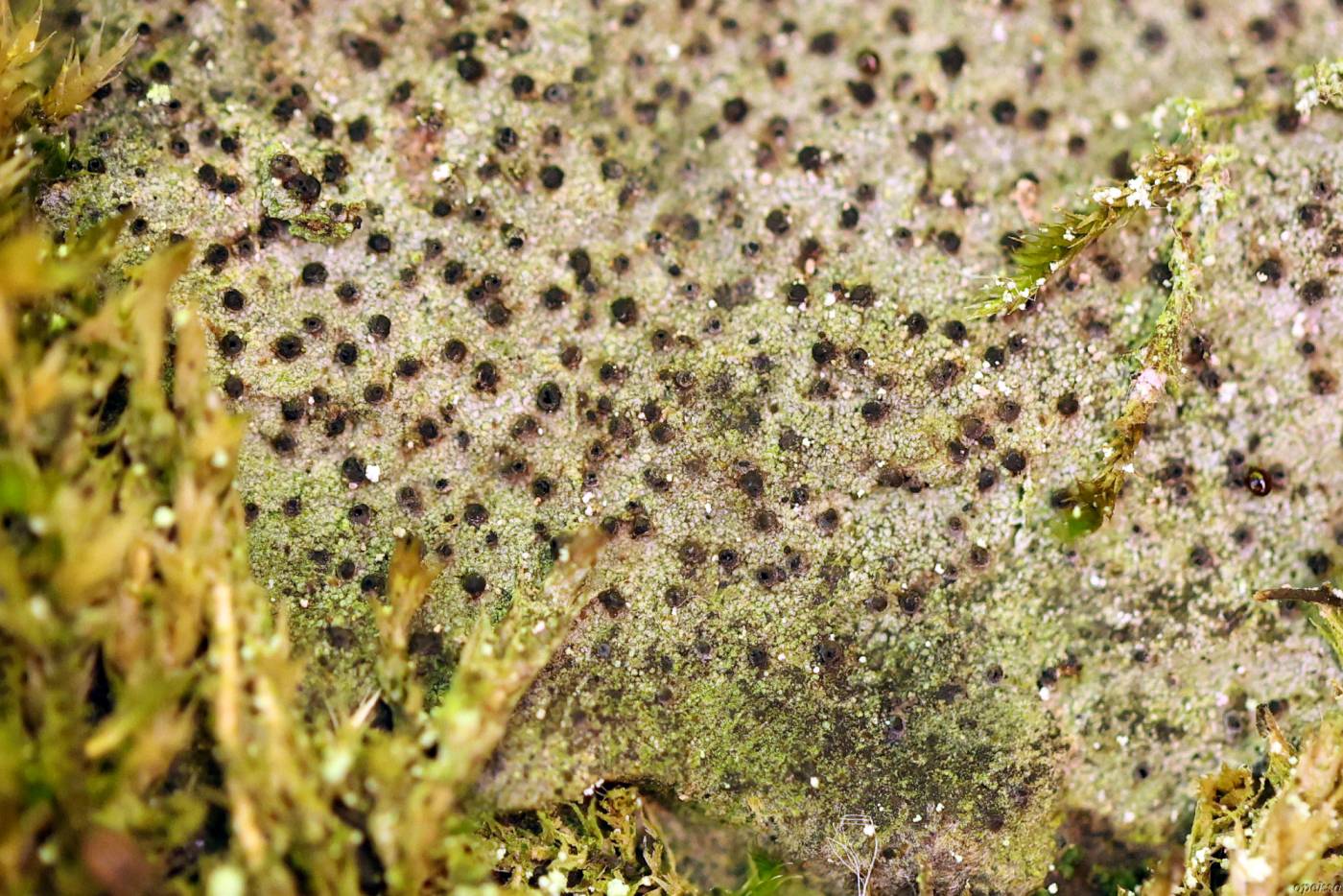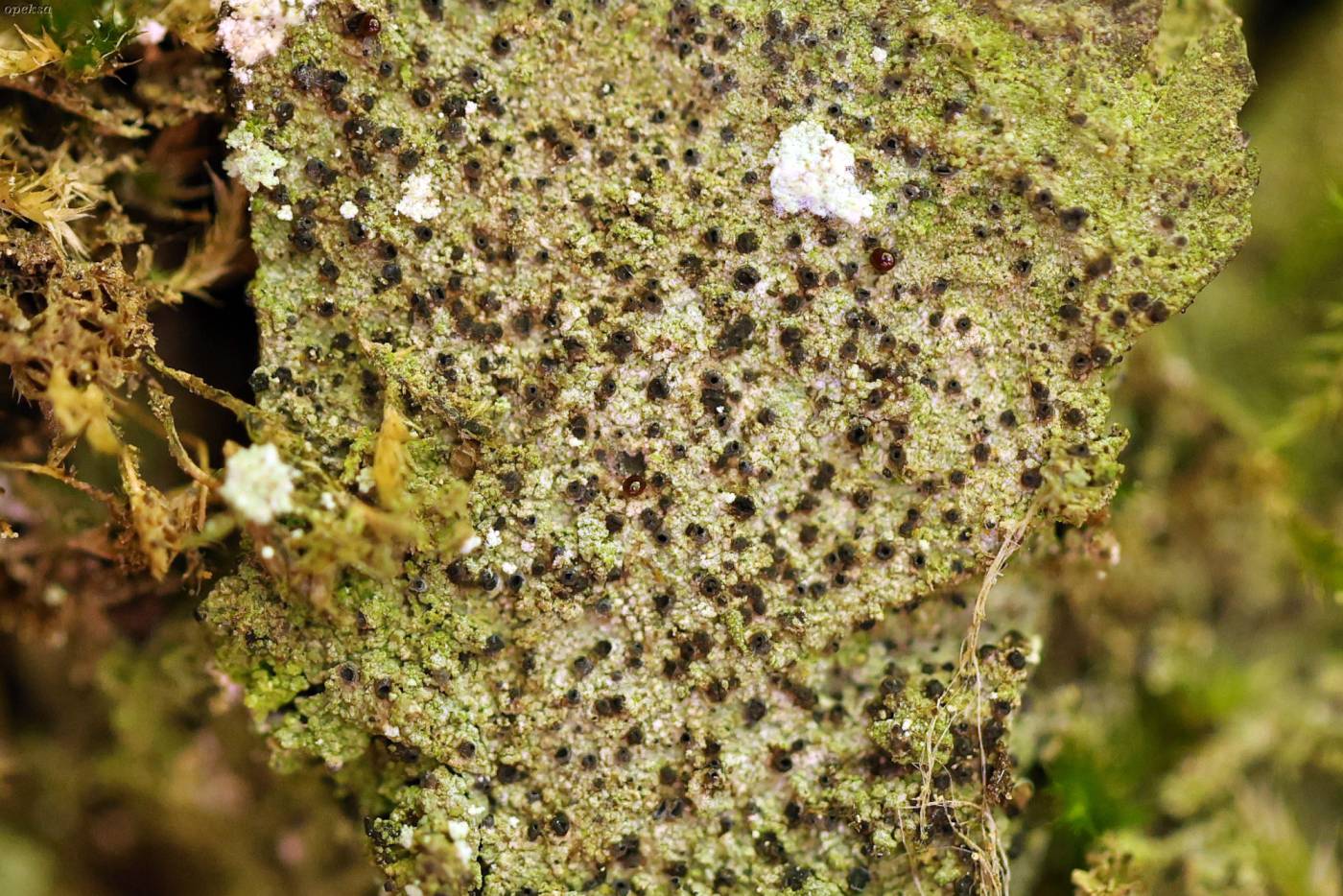A species rarely fertile, recognisable by its conspicuous black pycnidia, often white-covered, made up of a mass of conidia and remnants of a desiccated jelly. The dark greyish to green thallus contains argopsin (Pd+ red reaction) and is usually bordered by a distinct light-coloured prothallus. The species is most commonly found on shady and moist, often overhanging siliceous rocks and stones. It may occur also around watercourses and sometimes as an epiphyte at bases of old deciduous trees in moist habitats. Most records come from river valleys, where it may be seen in the splash zone. Aquacidia trachona can also be found in shaded screes or in places of anthropogenic origin, such as shaded stone walls in woodland. The lichen often grows on mineral-rich siliceous substrates, including vulcanites. It is a suboceanic species, scattered from the lowlands to lower mountains.
Until recently, this lichen used to be associated with the unrelated Bacidia coprodes. The latter resembles A. trachona mainly by the darkly pigmented hypothecia, ascospores, the frequent presence of pycnidia and also by its usual occurrence on shaded and moist rocks. Bacidia coprodes differs, however, in several morphological characteristics and by its occurrence on calcareous rocks in mountains (see this taxon for more information).
Literature: Llop E. & Ekman S. (2007): Bacidia coprodes – resurrecting a misinterpreted species. – Lichenologist 39: 251–257. Aptroot A., Sparrius L.B. & Alvarado P. (2018): Aquacidia, a new genus to accommodate a group of skiophilous temperate Bacidia species that belong in the Pilocarpaceae (lichenized ascomycetes). – Gorteria 40: 11–14.
taxonomic classification:Ascomycota → Lecanoromycetes → Lecanorales → Pilocarpaceae → Aquacidia
most frequented synonyms:Bacidia trachonaRed List (Liška & Palice 2010):VU – vulnerable
Red List (Malíček 2023):C3 – endangered
Occurrence in the Czech Republic
All records: 85, confirmed 83. One click on a selected square displays particular record(s), including their source(s).
